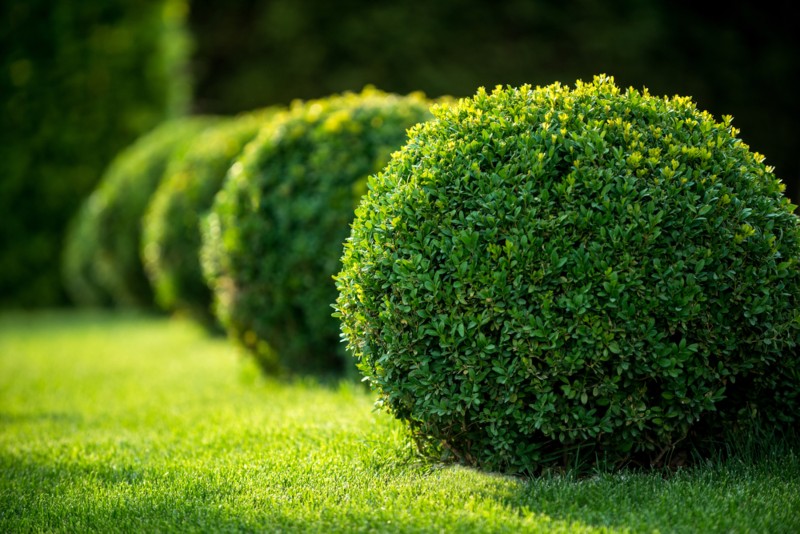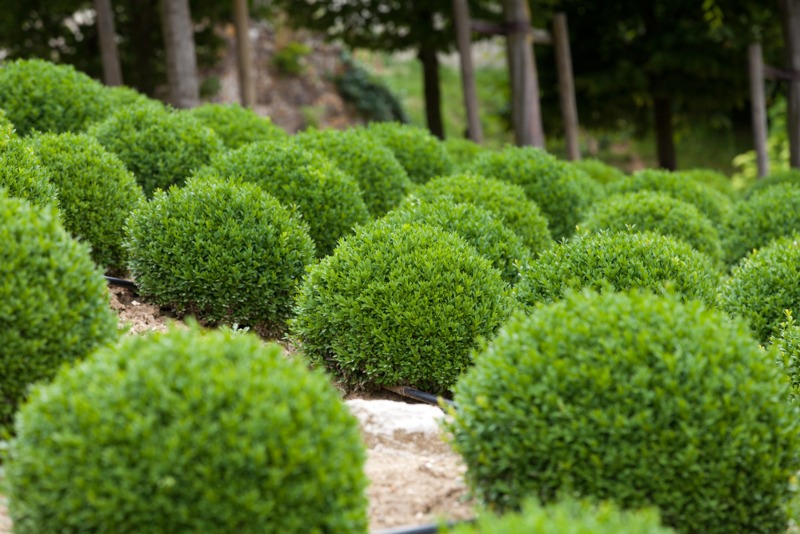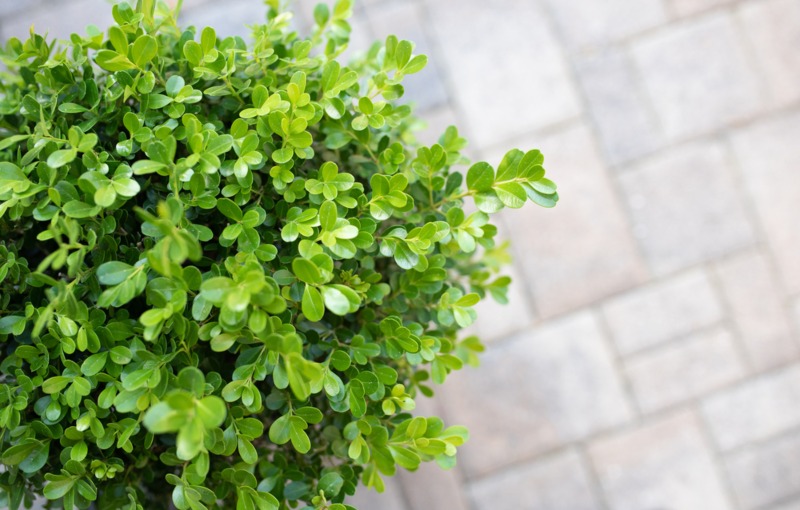
Japanese Boxwood (Buxus Microphylla var. Japonica) is a dwarf, evergreen shrub prized for its low maintenance nature.
This slow-growing plant is native to Japan but thrives throughout much of the United States, especially in the south, where many grow the hedge for privacy and visual interest. Some even choose to prune their boxwood shrubs, creating topiaries in various shapes and sizes.
However, pruning this shrub into distinctive shapes is entirely optional, and many choose to leave the plant in its natural state. In that case, it provides gorgeous edging with small but dense greenery and cream-colored blossoms in the spring.
| Botanical Name: | Buxus Microphylla var. Japonica |
| Common Name(s): | Japanese Boxwood, Little Leaf Box |
| Plant Type: | Evergreen Shrub |
| Mature Size: | 3-6 feet tall, 4-6 feet spread |
| Sun Exposure: | Full sun to partial shade |
| Water Needs: | Average |
| Soil Type: | Moist, well-draining loamy soil |
| Soil pH: | 6-7 |
| Bloom Time: | Spring (April/May) |
| Maintenance: | Low |
| Flower Color: | Green-tinted ivory |
| Hardiness Zones: | 6-9 (USDA) |
| Toxicity: | Toxic to animals and humans |
Japanese Boxwood Care
Japanese Boxwood is easy to care for and requires next to no maintenance. However, many choose to use Japanese Boxwoods for creative topiaries or distinctly pruned hedges, requiring more regular care.
Though the Japanese Boxwood is a dwarf shrub, it does require room to grow. To create a hedge, you should plant Japanese Boxwoods about three feet apart. They also do best with a bit of mulch to keep their roots cool throughout the summer.
Once your Japanese Boxwoods are mature, you’ll need to thin their limbs each year so that the sun can penetrate the inner foliage, allowing for continued growth. At their full size, Japanese Boxwoods can grow up to 6 feet tall and 6 feet wide, making them perfect for creating privacy along property lines.
Light
Japanese Boxwoods can tolerate everything from full sun to full shade. However, in shady areas, their growth is greatly diminished. It will take a long time for them to reach their full potential in size if they ever reach it at all.
So, for maximum growth, keep your Japanese Boxwood in a sunny spot. If you live in an exceptionally warm area, like zone 9, though, you should seek out partial shade. Japanese Boxwoods are prone to scorching in extreme heat, turning their leaves from vibrant green to bronze instead.
Water
Japanese Boxwoods have average water needs, but there is a technique to watering them effectively. Japanese Boxwood roots run deep, so it’s crucial to water deeply as well. You need the water to reach at least 12 inches down, which will take some time and regular attention.
Early on, while your Boxwood is maturing, it’s best to water them every few days or at least once a week. After your Boxwood is mature, which takes about two years, you can decrease your watering to every ten days. The goal is to give your Japanese Boxwood the equivalent of one inch of rainfall every ten days.
Temperature/Humidity
Japanese Boxwoods do well in the Southern United States, where it ranges from relatively dry to very humid. These plants are cold-hardy and can stand up to moderately rugged winters.
That said, it’s best to shelter them from overly dry, windy areas. They also cannot handle temperatures below -10 degrees Fahrenheit.
Soil
Japanese Boxwoods do best in loamy, well-draining soil. In other words, they like conditions with equal parts sand and silt. Loosely packed loamy soil allows nutrients to reach the deep roots while keeping the ground from becoming too soggy.
Fertilizer
Ideally, you’ll fertilize your Japanese Boxwood in early spring before you see any new growth using a 10-10-10 solution. You can also fertilize your Boxwood in late fall before the ground freezes.
However, you should avoid fertilizing in early fall, which can promote a second growing season that leads to winterkill.
Toxicity
Japanese Boxwood is toxic to humans and animals. Because of this, it’s also resistant to deer and other common garden pests.

Propagation
It’s easiest to propagate Japanese Boxwoods using cuttings. If you plan to do so, ideally, you’ll begin sometime between July and October. At that point, the spring growth should be hardened and ready to propagate.
To propagate from cuttings, place some loamy soil into a pot with drainage holes. Then, add your Boxwood cuttings. Cuttings should be between 4-6 inches in length.
You may need to use a pencil or stick to stabilize the cuttings in their new home. Once secure, place the pot with the cuttings in a warm place with indirect light, and keep the soil moist.
After about six weeks, you can transfer your Japanese Boxwoods to a larger container, and after about three months, they’re technically ready to transplant outdoors. However, you should avoid planting them outside until spring comes.





